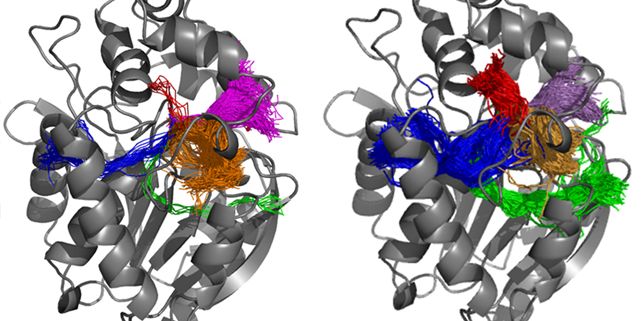To get a job at a prestigious world university takes a candidate many years of hard work and a bit of luck. Masaryk University, however, has such a representative at a highly respected school. It’s just that it... does not have a human form.
Caver scientific software developed by two centres at Masaryk University has been installed at Harvard Medical School.
“The Supercomputer Center at Harvard University brings together about 150 laboratories which will have access to our system. These are groups that do highly competitive cutting-edge research. Their interest demonstrates the usefulness of our solution,” says Jiří Damborský, Professor at Masaryk University’s Loschmidt Laboratories, where the idea first saw the light.
The research article introducing the software to scientific community will be published in PLOS Computational Biology.
What do experts need this tool for?
Researchers from the Faculty of Science began to develop the software a few years ago when they came up with a new technique for removing toxic compounds from the environment. The basis of this method lies in the modification of proteins in the places where other chemicals and water solvent flow into the protein.
To be able to complete thismodification, scientists need to get a more specific overview of tunnels of different widths. The Caver system can do this: it provides detailed information about the size and shape of the tunnel.
The first version of the software was developed by the scientists on their own. But in 2006 they needed to ask colleagues at the Human Computer Interaction Laboratory at Masaryk University’s Faculty of Informatics for help.
“Previous versions of the system were able to evaluate the cavities in the protein. This can be understood as a chain curled into a ball which is still moving so the holes are not well visible. With the new system they are perfectly visible,” explains Jiří Sochor, head of the laboratory.
Interest in Caver from all around the world
The new software tool is able not only to see the system better but first and foremost to modify protein attributes. In the short time since it was created by scientists at the university it has met with a great response from around the world. Caver system technology allows users to access it from a distance or to download it on their computers.
The website Caver.cz, where the programme is available free of charge, now has about 4,000 registered users from nearly 80 countries. “When we saw the statistics, we were surprised how many different countries users come from. Their spread corresponds with research activities in the field of structural biology and protein engineering,” says Damborský.
Later on, thanks to the big wave of interest, a spin-off company was founded. It offers Caver Viewer software with a user-friendly interface commercially to pharmaceutical and chemical-technology companies.
The biggest group of Caver system users comes from the United States, where there are about 800 of them. Around 350 experts use the software in Japan, while Germany, India and Great Britain are also well represented.
“The commercial version allows the creating of various graphs, colour schemes, animations and many other functions,” says Sochor. He added that cooperation between two teams from very different scientific environments has been very rewarding, although initially it was hard, too.
“From the very beginning we tried to communicate a lot within the team. Biochemists explained everything to us, took us to the laboratory, showed us what to do and how to do it. But even so, our students had to use a textbook and learn the basic terminology and concepts of this distant subject,” says Sochor.
Hard work but worth it. “From the beginning the issue seemed to us very promising for future research. Several doctoral students and students on master's and bachelor's programmes worked on it. We can always show user statistics on the web system at viva voce exams,” says Sochor smiling.
One of the doctoral students who participated in the development of the software was Antonín Pavelka. “I like the application of computer programmes for the study of natural phenomena. It was a challenge because the application of this is very practical,” Pavelka says about work whose scientific focus is bioinformatics.
Although the software has been a success, its authors have not stopped working on it. They intend to going to improve the programme to ensure a faster response, greater precision and the ability to analyze larger structures. “This is a job that will take years,” concludes Pavelka.
